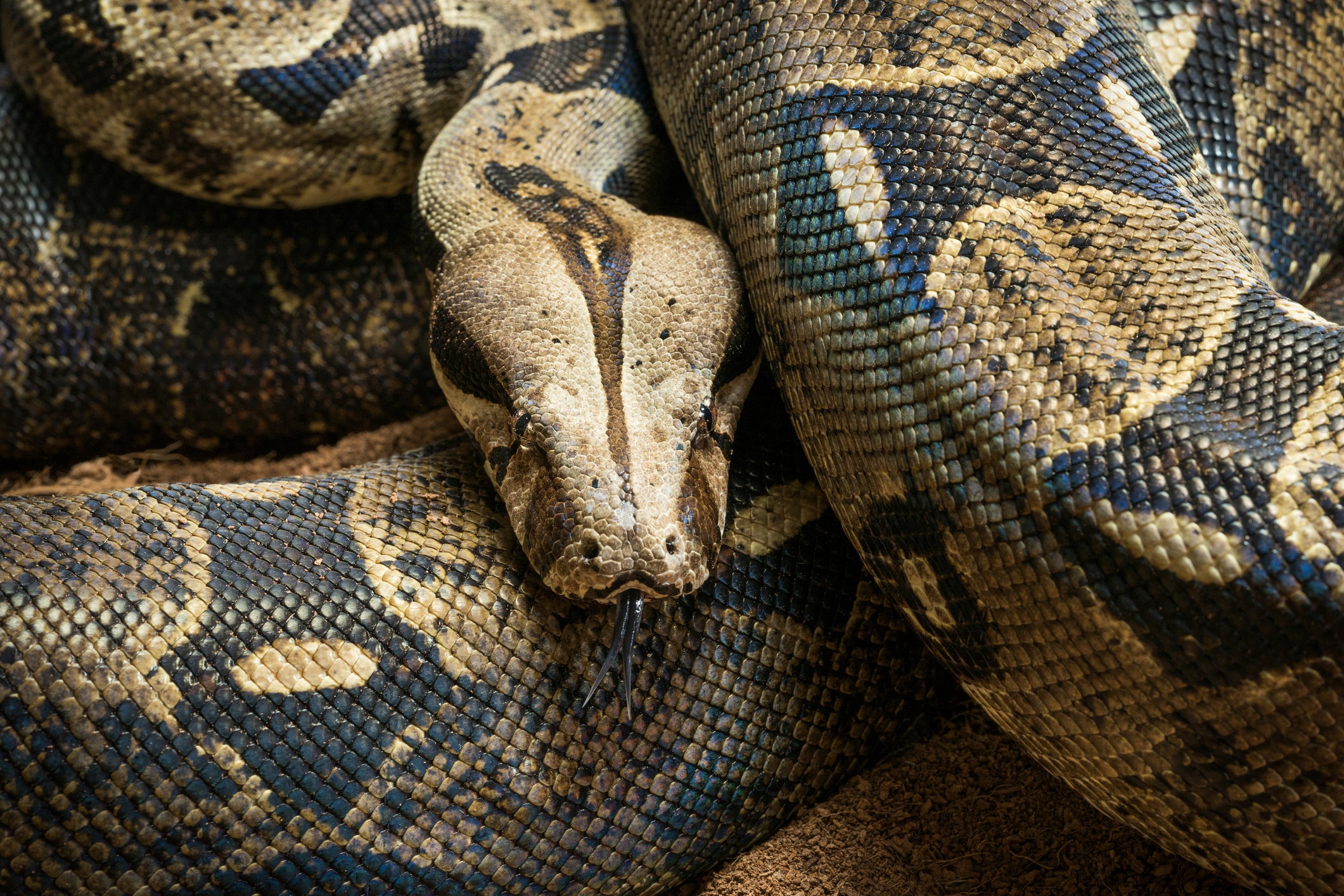How do boa constrictors breathe while squeezing their prey?
It can take up to 45 minutes to constrict and ingest its food, so how exactly is a boa constrictor supposed to breathe during this? Sam Jones has the answer

Your support helps us to tell the story
From reproductive rights to climate change to Big Tech, The Independent is on the ground when the story is developing. Whether it's investigating the financials of Elon Musk's pro-Trump PAC or producing our latest documentary, 'The A Word', which shines a light on the American women fighting for reproductive rights, we know how important it is to parse out the facts from the messaging.
At such a critical moment in US history, we need reporters on the ground. Your donation allows us to keep sending journalists to speak to both sides of the story.
The Independent is trusted by Americans across the entire political spectrum. And unlike many other quality news outlets, we choose not to lock Americans out of our reporting and analysis with paywalls. We believe quality journalism should be available to everyone, paid for by those who can afford it.
Your support makes all the difference.The boa constrictor got its name for a reason. To kill its prey, a boa will coil around it, squeezing hard enough to stop the prey’s blood from flowing, and then, stretching its jaws open, devour it whole. They are known to eat opossums and rats. Some of their larger relatives, anacondas, can eat capybara and deer, and there have been some instances of pythons eating people.
But constricting and ingesting prey is no small – or quick – feat. “They do this for 10, 15, up to 45 minutes,” says Elizabeth Brainerd, an evolutionary biologist at Brown University. “And that takes quite a bit of energy, so they have to be breathing.”
Brainerd and her colleagues set out to understand how boa constrictors breathe under such cramped conditions, and discovered that they are able to precisely shift the region of their rib cage that expands to draw air into their lungs. The research was published last Thursday in the Journal of Experimental Biology. Its findings shed light on the anatomy of snakes and how these slithering predators have come to thrive in so many parts of the world.
“Large prey ingestion really opened up all these new avenues for snakes to evolve that otherwise would not have been possible,” says John Capano, an evolutionary biologist at Brown University and an author of the study.
Looking out across the tree of vertebrate life shows that taking in and releasing air is more complex than it seems.
“Breathing is one of those things that seems super simple,” says Allison Hsiang, a computational paleobiologist at Stockholm University who was not involved in the study. “But if we’re looking at all the major vertebrate groups, we basically all breathe using completely different systems.”
Humans, for instance, have a diaphragm, while birds use air sacs. But snakes are fully dependent on their rib cage and, in addition, have large, long physiques that sit behind a comparatively minuscule head and require a lot of food to maintain.
The team believes that this ability to modulate rib engagement emerged while or before snakes evolved the ability to constrict, and perhaps ahead of a snake’s ability to eat large prey
“Basically, snakes are all ribs,” Brainerd says. To breathe, the animals slowly expand a section of their rib cage, which creates a pressure change that pulls air in.
While they’re squeezing, those ribs are compressed. Ingesting prey also expands ribs to their limit. Exactly how boas could breathe while constricting or ingesting remained a mystery.
“Something had to happen with the evolution of their lung ventilation system in order for them to become these elongated, small-headed animals that eat big meals,” Brainerd says.
Based on previous observations in the field, scientists had theorised that, when constricting and ingesting prey, snakes are probably changing the specific region of their rib cage that’s expanding. But another option would be that they use any uncompressed area of their rib cage to draw air into their lungs.
To test these hypotheses, the research group visualised a boa constrictor’s rib cage during constriction using 3D X-ray technology. With the snakes anaesthetised, the team implanted metal markers no bigger than half a millimetre in the ribs and vertebrae they wanted to image. Then they filmed these regions with X-ray video, and using a blood pressure cuff, restricted rib motion in specific regions, simulating what happens in nature when these snakes constrict their prey.
When resting, boa constrictors breathe using ribs near the upper third of their lungs. But when the blood pressure cuff was wrapped around those ribs, a specific set of ribs further down the snake’s body began expanding to draw in air. “The snake just turns off a section of the rib cage and then turns on another section,” says Capano, who adds that as soon as the cuff was removed, the ribs used to breathe during rest immediately re-engaged.
The team believes that this ability to modulate rib engagement emerged while or before snakes evolved the ability to constrict, and perhaps ahead of a snake’s ability to eat large prey. Without this breathing adaptation, they say, snakes may not have become such a diverse class of reptiles spread out across the globe.
This article originally appeared in The New York Times




Join our commenting forum
Join thought-provoking conversations, follow other Independent readers and see their replies
Comments